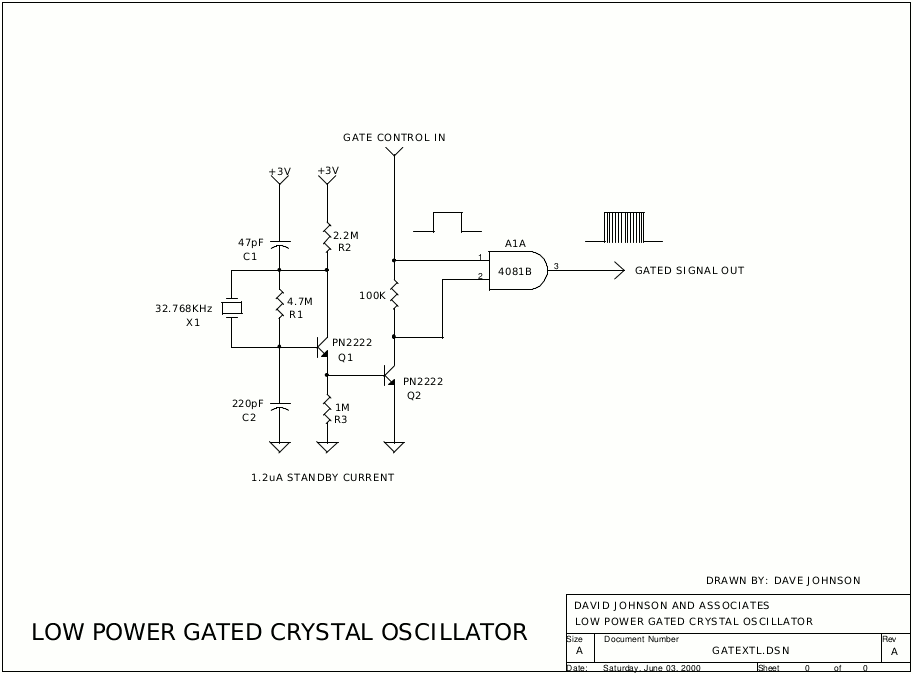Making a 32768Hz crystal oscillate has been a major concern lately. See Slow oscillations, Oscillators' basics, Crystal oscillator with complementary MOSFETs
This time I was curious to try http://www.discovercircuits.com/DJ-Circuits/gatextl.htm

The great news : it started to oscillate immediately.
The other news : ok I used a pair of 2N2907, PNP, hFE=230 so I inverted everything. No logic gate but I kept Q2 for amplification. I measured 15µA so I'm happy.
However I quickly found that the power supply voltage was crucial in weird ways. The provided values are good for an average system but it didn't work at 3V, only between about 1.5V and 2V for a usable range.
I replaced R1, R2, R3 and the 100K with adjustable resistors and started playing...
Forget R1, keep it very high, it just keeps a tiny current path between the crystal's pins.
R2 and R3 are more tricky. Oh, R3... Remove Q2 and the thing won't work. Yes, its base-equivalent diode biases the emitter of Q1 ! So actually R3 is in parallel with the base and also adjusts the output signal's level.
R2 and the 100K also adjust the offset of the output signal.
I don't know why, but some 50Hz got picked up after a while, or maybe there is some over-oscillation surimposed. Freaky, even if I powered from a battery.
Capacitor values are important too, and the "Pi network" was initially following the schematic, but why 220p ? Well increasing the capacitance seems to be the only good way to increase the signal amplitude. So I replaced the 47p with 220p... Maybe 1nF will increase the amplitude even more ? Anyway there's a big square signal when I touch one pin...
I'm a bit miffed that the thing won't work at 3V as advertised. The final system would work at 4.5V and at least one resistor will have to be adjustable to give the proper amplitude...
Next in line is this circuit : http://www.discovercircuits.com/H-Corner/32hz ultra low power crystal oscillator.htm
Oh and I have to try with Germanium transistors ;-)
Edit : many measurements were wrong. Particularly, it's very sensitive to the mains interference (50Hz here). I must find something else.
 Yann Guidon / YGDES
Yann Guidon / YGDES
Discussions
Become a Hackaday.io Member
Create an account to leave a comment. Already have an account? Log In.